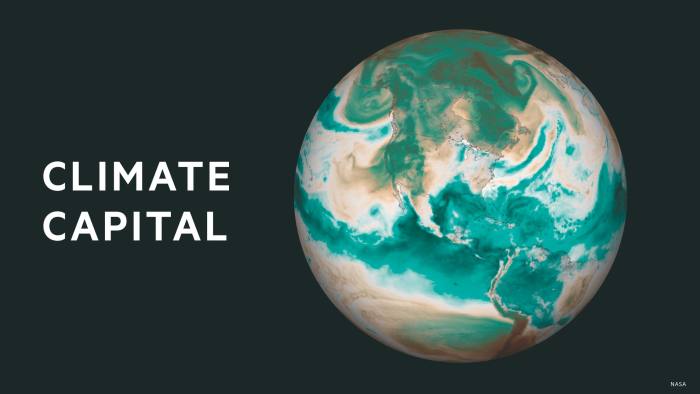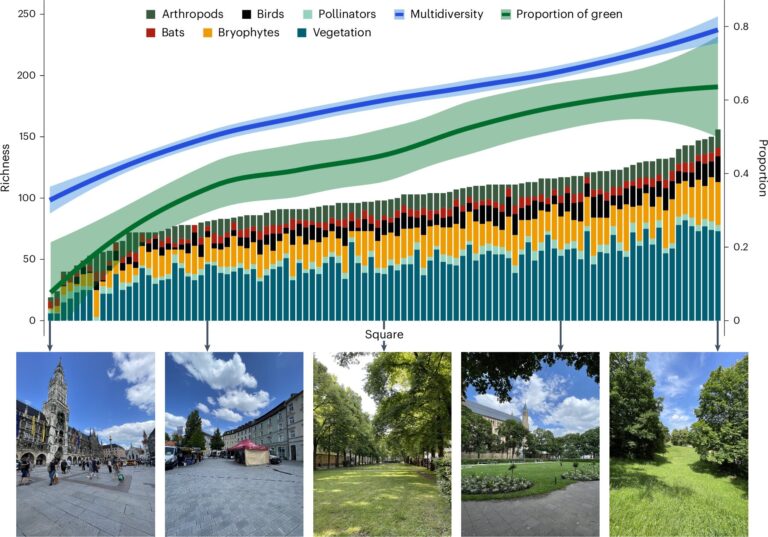
Receive free Climate change updates
We’ll send you a myFT Daily Digest email rounding up the latest Climate change news every morning.
In 1975, Rudi Carrell, a Dutchman who became a star of German television, had a hit with the song “Wann wird’s mal wieder richtig Sommer?” or “When will it really be summer again?” He longed for bygone heatwaves, “when you didn’t need the sauna/ when sheep were happy to be shorn”:
A summer like in the old days,
Yes, with sunshine from June to September
And not so wet and Siberian, like last year
People from cold northern climes had been yearning for hot summers since at least 1923, when the American socialites Gerald and Sara Murphy invented sunbathing on the French Riviera. A consensus gradually arose around the ideal climatic spot: a beach, sunny skies and temperatures around 25C.
But just since the heatwaves of 2019, summer has morphed from something to crave into something to fear. Europe, which is heating twice as fast as the global average, had its hottest ever summer in 2022, breaking the record set in 2021 — all of which was before the world re-entered the hotter El Niño climate cycle. No beach is fun at 40C with wildfires on the horizon.
For many well-off people, the first tangible effect of climate change will be that it shifts where we go on vacation: after all, that’s easier than shifting where we live. Holidaymaking simultaneously changes the climate (tourist transport now causes about 5 per cent of emissions) and is changed by the climate. As the pandemic gives way to a record era for tourism, a new global holiday map will emerge fast.
For now, the map is dominated by beaches. “Coastal tourism is the largest component of the global tourism industry, with more than 60 per cent of Europeans opting for beach holidays, and the segment accounting for more than 80 per cent of US tourism revenues,” said a 2014 study by Cambridge university.
Some beach destinations — the Maldives and bits of the Caribbean — will vanish beneath the waves. In the Med too, especially on the African coast, the rising sea is eroding beaches. It’s also becoming unbearably hot. We’ll probably see a trend towards beach holidays in cooler northern Spain (where I escaped last summer’s heatwave), Normandy, the UK and Scandinavia, before these places eventually overheat, too. Alaska and soon the Arctic could become more enduring summer havens.
Here’s a microcosm of how this might change the holiday map. Thirty years ago, I spent a few months in St Leonards-on-Sea, a fading town on England’s south coast. It had been a high-end bathing resort since the 1820s, until cheap flights to the Med killed off British seaside holidays. When I knew the place, the elegant former hotels near the seafront were filled with struggling pensioners and people with mental-health problems stashed there by London councils. In the new climate, St Leonards might revive (providing English water companies stop dumping raw sewage into rivers and seas). And on days when it’s too hot for sunbathing, you’ll be able to tour the local Sussex vineyards. Meanwhile, Spain’s boiling Costa del Sol might inherit the crown of abandoned ex-holiday destination. Such shifts would partially reverse the historic flow of tourist money from richer to poorer countries.
Another likely trend: summer will lose its place as peak tourist season. First, it will increasingly be too hot to travel for pleasure. Second, a growing number of childless people aren’t bound by the long school summer holidays. Third, as tourism booms, popular destinations are running out of space in peak season. Expect beach resorts to refocus on spring, when they can offer northerners their first soft rays of the year. We may even see a return to the 1920s, when the British ruling class would set up on the Riviera in midwinter.
Winter skiing holidays will start to die out. Forty per cent of the world’s skiing visits are now to the Alps, where lack of snow is one of the main reasons hundreds of resorts have closed. Almost all Alpine glaciers could disappear this century. In the US, across a number of resorts, the skiing season contracted by an average of 34 days between 1982 and 2016, write Xubin Zeng of the University of Arizona and others. Ski towns have begun trying to remake themselves as summer hiking and cycling destinations.
The changes to the holiday map will be traumatic. The chief victims will be millions of tourism workers in poor countries and the family members they support. But this upheaval will be only a dry run for the more fundamental displacements ahead.
Follow Simon on Twitter @KuperSimon and email him at [email protected]
Follow @FTMag on Twitter to find out about our latest stories first
Climate Capital

Where climate change meets business, markets and politics. Explore the FT’s coverage here.
Are you curious about the FT’s environmental sustainability commitments? Find out more about our science-based targets here






